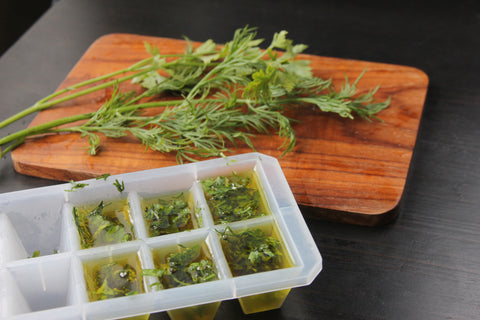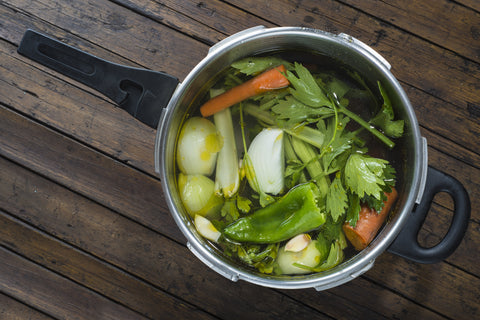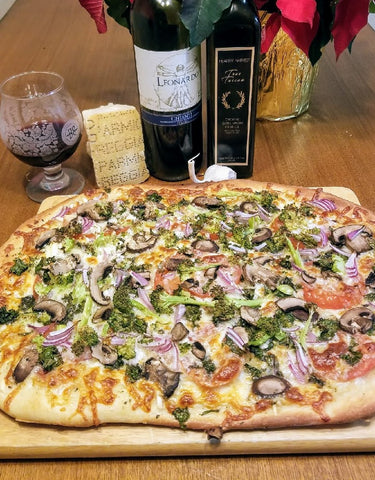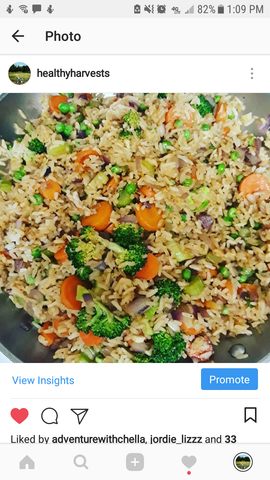 These are what I call "compost recipes". They're the recipes that have a basic outline, but the specific ingredients can easily be substituted so you can dump in whatever veggies are close to going bad. It's a great way to clean out the fridge and prevent food waste.
These are what I call "compost recipes". They're the recipes that have a basic outline, but the specific ingredients can easily be substituted so you can dump in whatever veggies are close to going bad. It's a great way to clean out the fridge and prevent food waste.
After all, it's not just the money you spent on the food that goes to waste, but the water used to grow the food, the labor that went into growing it, the fuel used to transport it to you. Every act of kindness and consideration for the earth matters!
Spring Farm-To-Table Frittatta
We made this Spring Farm-To-Table Frittata with spinach, mushrooms, onions, and olives, but this recipe is a go-to for throwing in whatever veggies need to be used up before they go bad. Saute them in a cast iron, whisk in eggs and cream, pop it in the oven, and voila!
Olive Oil Herb Cubes

Herbs are some of the easiest plants to grow, and they don't require a lot of space. But if you get yours from the store or market, you likely know how difficult it can be to use the whole bunch before it goes bad. Next time, use this trick! Chop your fresh herbs and place them in an ice cube tray. Fill the cubes with extra virgin olive oil. Freeze until solid. Then you can place the cubes in a container, label them, and toss them in any dish as needed for fresh herb flavor and aroma.
Homemade Broth

Homemade broth is SO easy to make. Whether it's made from veggie scraps or leftover bones, broth is one of the oldest medicinal foods. Remember Grandma's chicken noodle soup? If she made her own chicken broth, the collagen from the bones boosts our immune system. It also helps repair joints and leads to healthy hair, skin, and nails.
So how do you make it? Save your veggie scraps - carrot ends, onion ends, wilted celery stalks or the leaves - really, any veggies. Especially those no longer fresh enough to eat. You can also save bones from beef, chicken, lamb, etc. I always buy whole chickens for the cheapest price per pound. Plus, then I use the bones to make a few quarts of broth for even more added value. You can freeze the scraps until you have enough to fill a stock pot or slow cooker. When you're ready, add the scraps to a big pot or slow cooker and cover with water. If you're using bones, add a touch of vinegar to leech the nutrients from the bones and make the finished broth nice and gelatinous. Add salt, herbs and spices and cook low and slow for about 12 hours. If you can leave it on even longer, even better.
You can then use the broth as a base for soups and stews, to make rice, quinoa, and other grains, or ask a flavorful feel good drink when you need a boost.
Garlic Olive Oil Pizza with Fresh Veggies

We use an organic store-bought crust to save on time, and throw together whatever veggies we have on hand for fresh flavor. If you’re craving pizza, this is a great way to incorporate your farmer’s market finds and still get a ton of nutrients.
We use garlic and extra virgin olive oil for the base, instead of a tomato sauce, so the flavors of the veggies really shine. Let us know your favorite variations!
Vegetable Fried Rice

Veg Fried Rice is a weeknight dinner staple in our home. Ready in 30 minutes, all you have to do is saute whatever veggies you need to use up from the fridge in some extra virgin olive oil while you cook some rice. Add the rice to the veggie mix with a dash of sesame oil, soy sauce, and chili paste (like Gojuchang or Sriracha). Scramble in some eggs and top with green onions and you've got a huge pot of veggies ready for meals all week!

